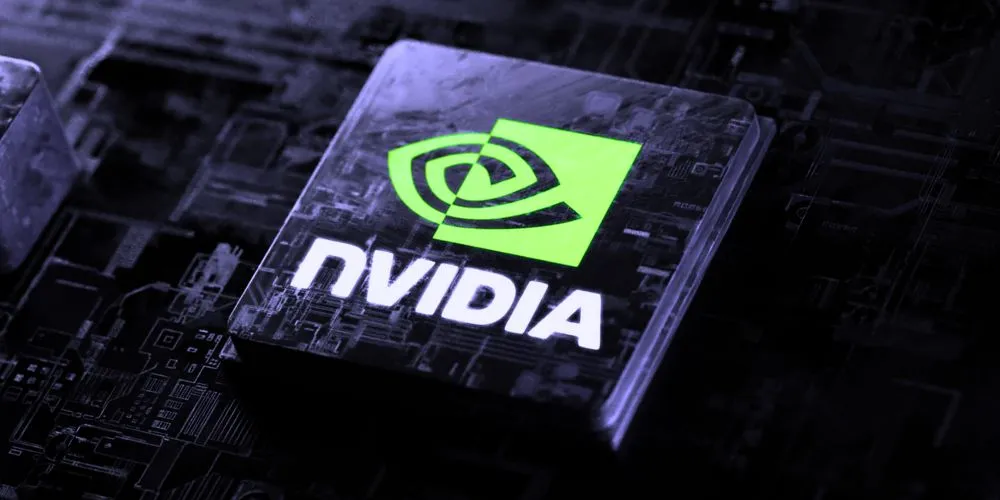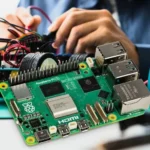NVIDIA has emerged as a central player in the advancement of artificial intelligence (AI) and machine learning (ML) technologies through its pioneering work in graphics processing units (GPUs). Initially designed for rendering graphics in video games, NVIDIA’s GPUs have become the backbone of modern AI and ML applications, powering everything from autonomous vehicles to advanced scientific research. This case study explores how NVIDIA revolutionized the AI and ML fields, the technological advancements that fueled this transformation, and the company’s impact on industries worldwide.
Background of NVIDIA and GPU Technology
Founded in 1993 by Jensen Huang, Chris Malachowsky, and Curtis Priem, NVIDIA initially focused on developing cutting-edge graphics technology for gaming and visual computing. Over time, the company’s GPUs evolved from niche gaming hardware to crucial tools in complex computational tasks. The GPU’s parallel processing architecture, which allows it to handle multiple tasks simultaneously, made it uniquely suited for AI and ML workloads, where large datasets and complex computations are essential.
The Role of GPUs in AI and ML
In traditional computing, central processing units (CPUs) handle tasks sequentially, which can be limiting for AI and ML algorithms that require massive amounts of data to be processed in parallel. NVIDIA’s GPUs, with thousands of cores capable of performing simultaneous operations, solved this limitation. This parallel processing power accelerated the training of neural networks and allowed AI models to process more data in less time.
Early Adoption in High-Performance Computing
NVIDIA’s GPUs were first embraced by researchers in high-performance computing (HPC) before their widespread adoption in AI and ML. In 2006, NVIDIA introduced the CUDA programming platform, which allowed developers to program GPUs for general-purpose tasks beyond graphics rendering. This opened the door for using GPUs in scientific research, simulations, and AI applications.
Evolution into Deep Learning
By the early 2010s, deep learning, a subset of AI focused on training neural networks with many layers, began to gain momentum. Researchers quickly realized that NVIDIA’s GPUs were ideally suited for deep learning tasks. As a result, GPUs became the hardware of choice for training deep learning models, leading to faster breakthroughs in image recognition, natural language processing, and other AI fields.
Technological Innovations that Fueled NVIDIA’s Success
NVIDIA’s continued leadership in AI and ML results from several key technological innovations. The company has consistently pushed the boundaries of what GPUs can do, adapting its technology to meet the specific demands of AI and ML researchers and developers.
The CUDA Platform
One of the most critical innovations was the development of the CUDA platform, which allowed developers to harness the full power of NVIDIA’s GPUs for tasks outside of gaming. CUDA allowed developers to write software leveraging GPUs for scientific simulations, big data analytics, and AI model training. This innovation made NVIDIA GPUs more versatile and integral to the emerging AI ecosystem.
Tensor Cores and Mixed Precision
In 2017, NVIDIA released its Volta architecture, which introduced Tensor Cores. Tensor Cores are specialized hardware units designed to accelerate deep learning tasks, particularly matrix multiplications, at the core of neural network computations. Tensor Cores enable mixed-precision training, allowing neural networks to use lower-precision arithmetic (such as 16-bit floating point) without sacrificing model accuracy. This development dramatically improved the speed and efficiency of AI model training.
NVLink and Scalability
NVIDIA’s NVLink, introduced with the Pascal architecture, provides high-speed communication between GPUs and CPUs, allowing multiple GPUs to work together more efficiently. This scalability has made NVIDIA GPUs even more powerful in data centers, where large AI models are trained across various GPUs. NVLink has been crucial in powering AI supercomputers and large-scale machine learning tasks in natural language processing and autonomous driving.
Impact on AI Research and Industry
NVIDIA’s technological advancements have profoundly impacted academic AI research and industrial applications. The ability to train AI models faster and more efficiently has accelerated healthcare, robotics, and autonomous vehicle breakthroughs.
AI Research Breakthroughs
NVIDIA’s GPUs have powered some of the most significant breakthroughs in AI research. In 2012, the deep learning algorithm that won the ImageNet competition—widely seen as a turning point in AI—was trained using NVIDIA GPUs. Since then, NVIDIA GPUs have become a standard tool for AI researchers working on image recognition, speech recognition, and natural language processing. This has resulted in faster innovation and more accurate models in less time.
Industrial Applications in Healthcare
One of the most promising areas where NVIDIA’s GPUs have had a transformative impact is healthcare. AI models powered by NVIDIA’s hardware analyze medical images, predict disease outbreaks, and assist in drug discovery. For instance, AI algorithms trained on NVIDIA GPUs are helping radiologists detect early signs of cancer in medical scans, improving diagnostic accuracy and potentially saving lives.
Autonomous Vehicles and Robotics
NVIDIA’s GPUs are also at the heart of the autonomous vehicle revolution. Companies like Tesla and Waymo use NVIDIA’s hardware to power the complex AI models that enable self-driving cars to perceive their surroundings and make real-time driving decisions. In robotics, NVIDIA’s Jetson platform provides the processing power for AI-enabled robots in manufacturing, logistics, and space exploration.
Challenges and Competition in the GPU Market
Despite its success, NVIDIA faces significant challenges in maintaining its dominance in the AI and ML markets. The rise of competitors and the increasing complexity of AI models mean that NVIDIA must continue to innovate to stay ahead.
Competition from AMD and Intel
NVIDIA’s main competitors, AMD and Intel, have significantly invested in GPU technology to challenge NVIDIA’s dominance in AI and ML. AMD’s Radeon GPUs and Intel’s recent entry into the discrete GPU market with its Xe architecture aim to capture a share of the rapidly growing AI and ML hardware market. Both companies are focused on improving the performance of their GPUs for AI workloads, adding pressure on NVIDIA to continue innovating.
Specialized AI Chips and TPUs
Beyond traditional GPU competitors, companies like Google and Amazon have developed specialized hardware for AI tasks. Google’s Tensor Processing Units (TPUs) are custom-built for deep learning and offer an alternative to NVIDIA’s GPUs in cloud-based AI training. Similarly, Amazon’s Inferentia chips are designed for AI inference tasks and are being integrated into its cloud infrastructure. These specialized chips significantly challenge NVIDIA’s dominance, especially in cloud-based AI services.
Rising Costs and Energy Efficiency
The demand for higher computational power grows as AI models become more complex. However, the rising cost of producing high-performance GPUs and the need for more energy-efficient solutions are significant challenges. NVIDIA must balance the need for more powerful hardware with cost and energy consumption constraints, especially as data centers prioritize sustainability.
The Future of NVIDIA in AI and ML
NVIDIA is poised to continue its leadership in AI and ML, but the landscape is evolving. Several emerging trends and developments will shape the company’s trajectory.
Expanding into AI Supercomputing
NVIDIA is increasingly focused on AI supercomputing, where its GPUs power some of the world’s most powerful AI research systems. The company’s acquisition of Mellanox in 2019 strengthened its position in high-performance computing, giving it more control over the hardware infrastructure needed for large-scale AI tasks.
AI in the Edge and IoT
As AI becomes more integrated into everyday devices, NVIDIA focuses on edge computing, where AI models are deployed on devices with limited computing power, such as drones, cameras, and sensors. The Jetson platform is central to this strategy, providing compact, powerful GPUs for edge AI applications. This shift toward edge AI will likely become a significant growth area for NVIDIA as industries increasingly rely on AI in real-time, low-latency environments.
Advancements in Quantum Computing
NVIDIA is also exploring the potential of quantum computing, which could revolutionize how AI models are trained and deployed. While quantum computing is still in its early stages, NVIDIA’s involvement in this field positions it to capitalize on future breakthroughs that could further accelerate AI development.
Conclusion
NVIDIA’s contributions to AI and machine learning have revolutionized the industry, providing the hardware necessary for some of the most significant technological breakthroughs of the last decade. NVIDIA’s GPUs have proven versatile, powerful tools for accelerating computation from gaming to high-performance computing and AI. However, as competition intensifies and AI models become more demanding, NVIDIA must continue innovating to maintain its position at the forefront of AI and machine learning. With its focus on AI supercomputing, edge computing, and even quantum technologies, NVIDIA is well-positioned to remain a key player in the future of AI and machine learning.










